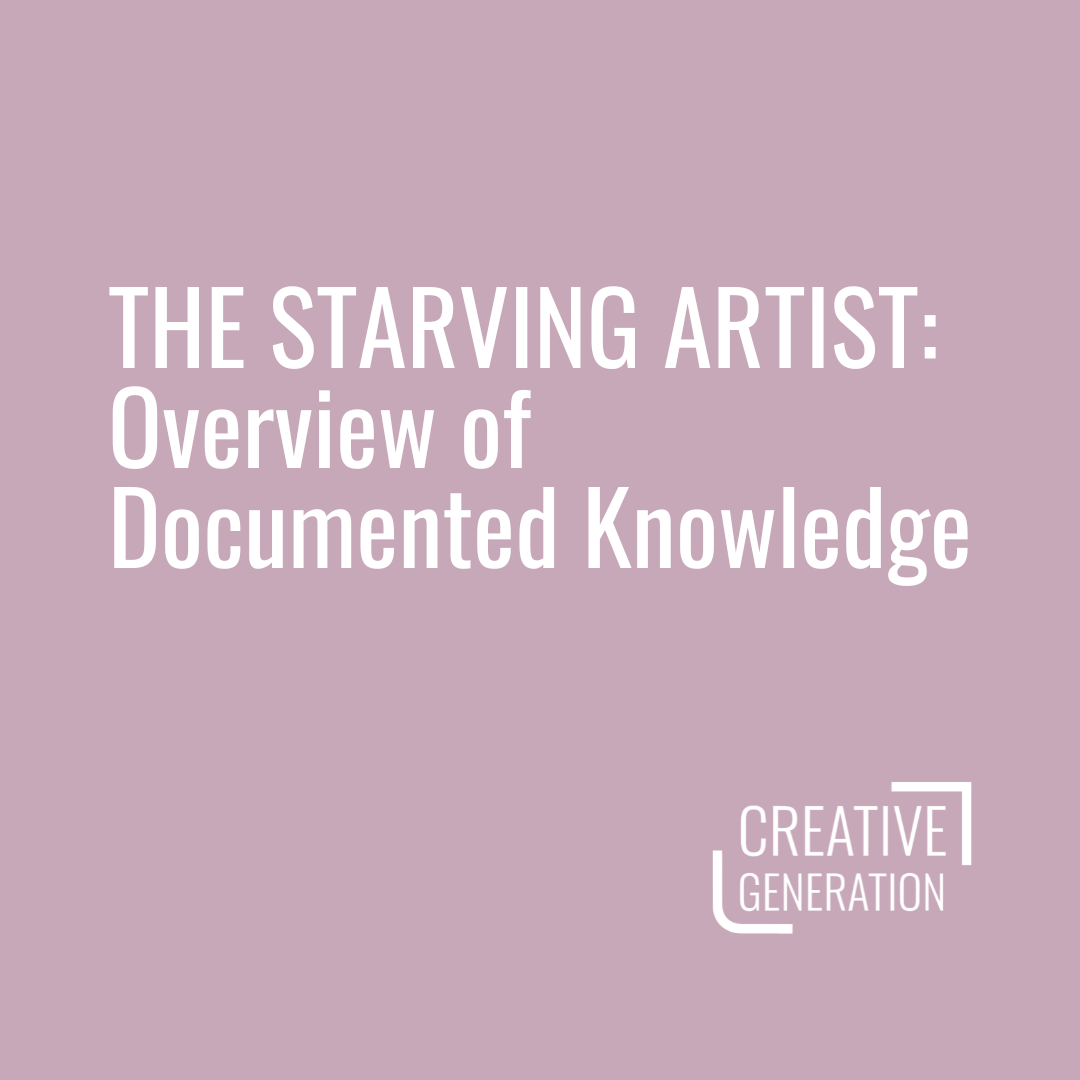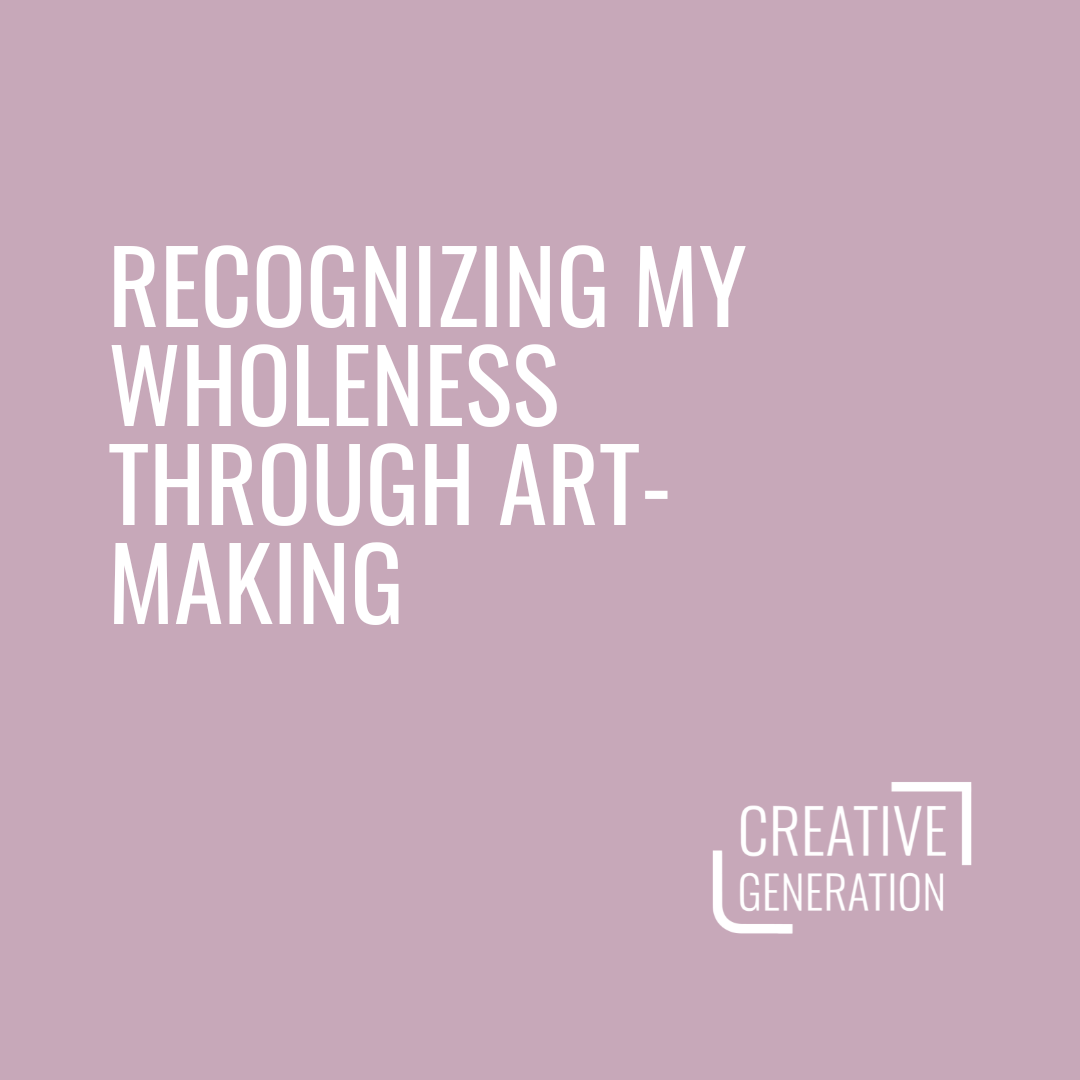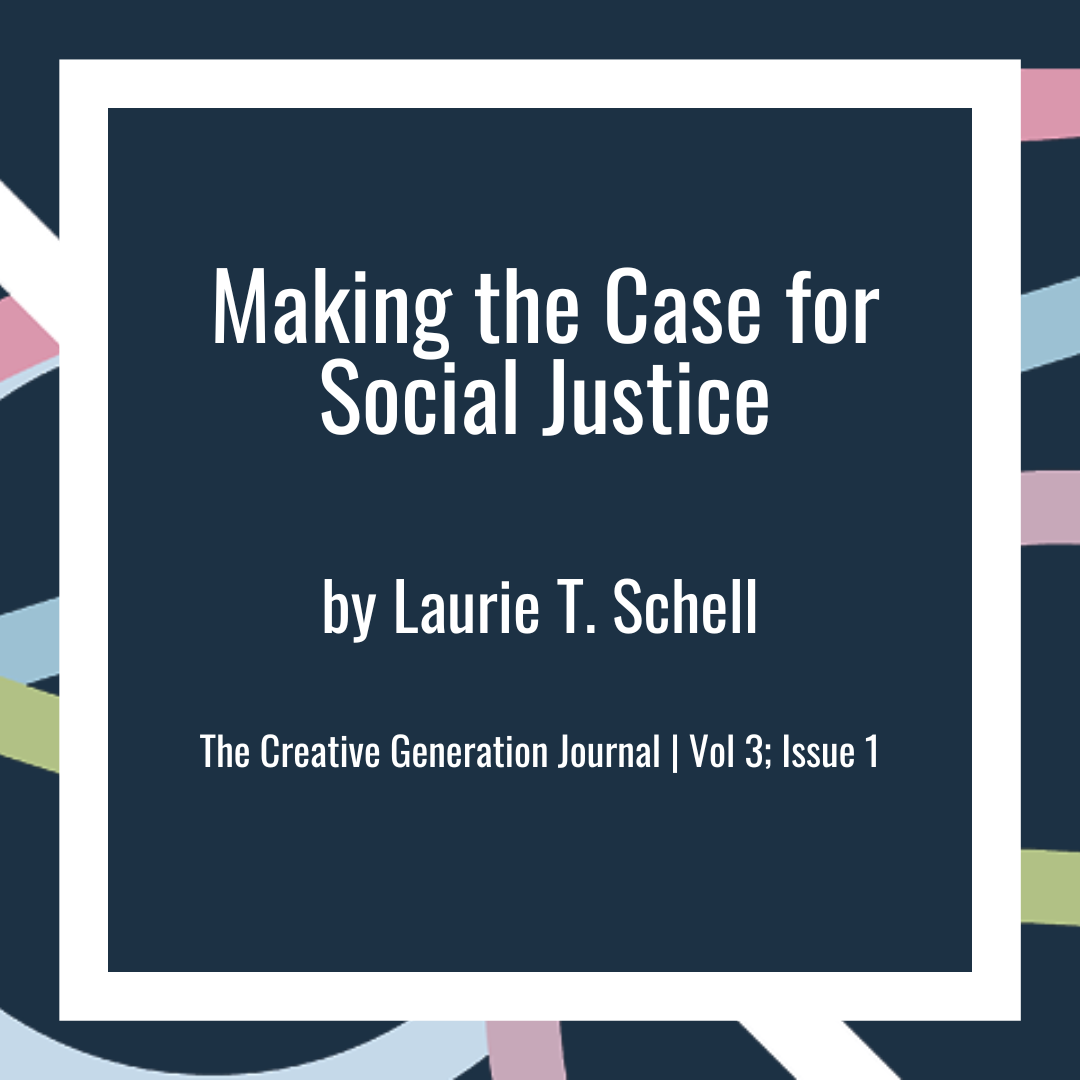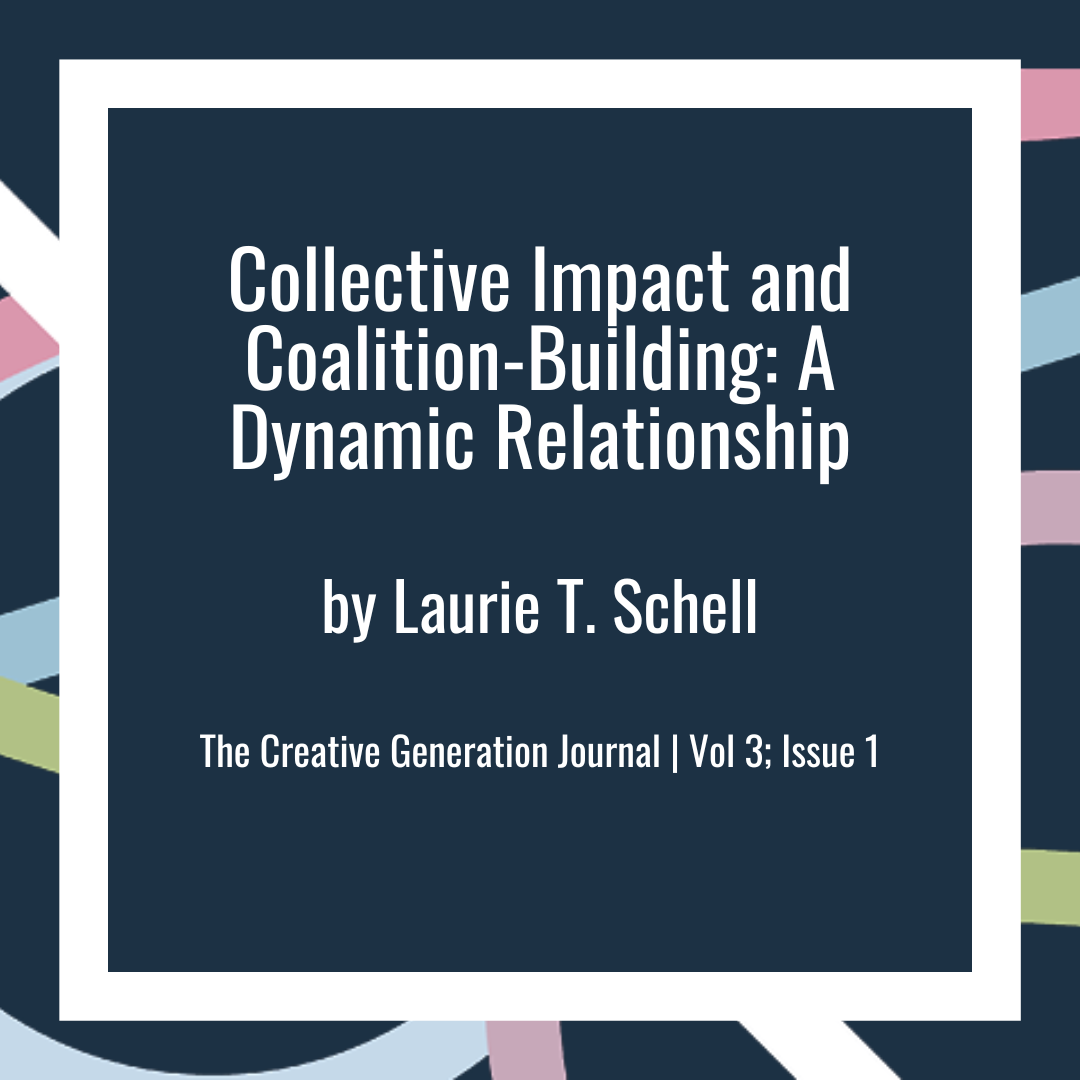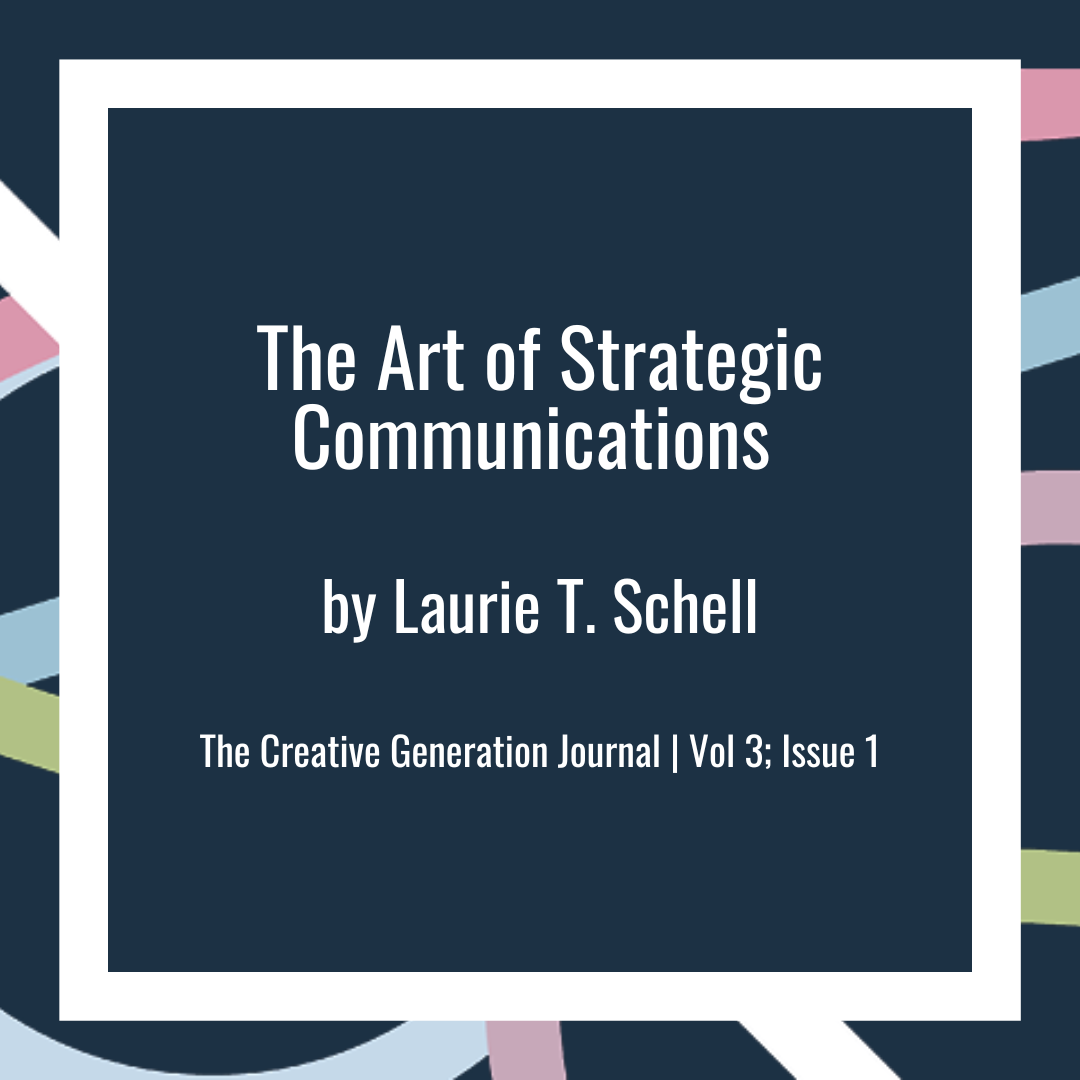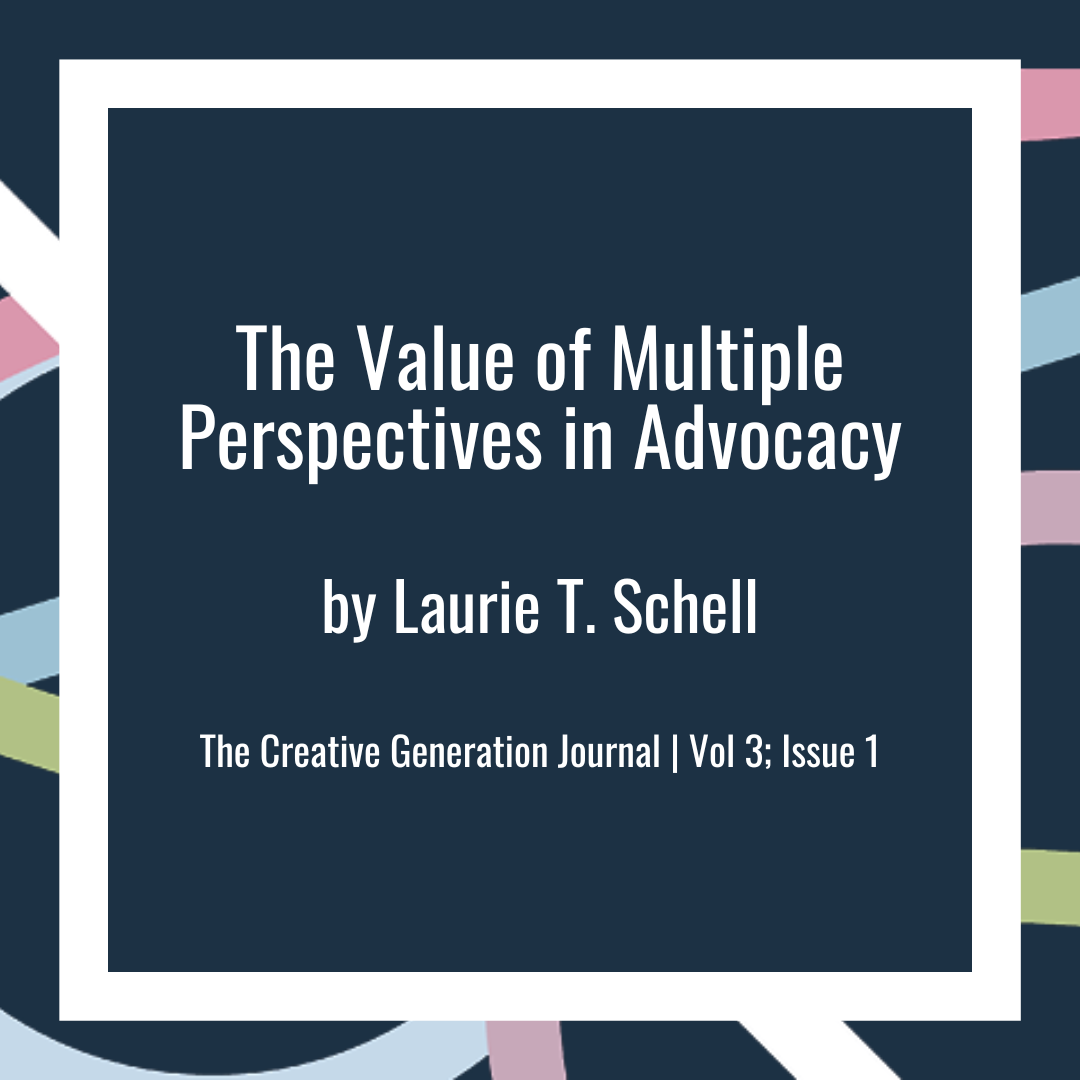Publications Catalogue
The capstone project, "Amplifying the Voices of Black Pedagogy," delves passionately into the experiences of Black, licensed music educators in North and South Carolina's public school systems, driven by the researcher's own journey as a Black, Queer woman in the music industry. Its aim is to give voice to Black music educators, understanding the challenges they face, their strategies for overcoming them, and the guiding principles of their pedagogy.
This Overview of Documented Knowledge aims to provide an understanding of transparency, its various dimensions, implications, and potential benefits, by outline trends, examples of strategies, methods, accountability considerations, effects, and costs associated with transparency.
This Overview of Documented Knowledge explores the history of the notion of “starving artist” as well as issues of elitism and perceptions of serious artistry which intersect with each other. Through a review and analysis of existing knowledge from the cultural sector, the author argues that financial and educational barriers keeping many out of artistic practice contributes to an industry atmosphere that encourages multihyphenate work in order to stay afloat.
As education and cultural systems continue to grapple with the impacts of the COVID-19 pandemic, those involved in the systems—primarily the decision-makers, policy implementers, educators, and their collaborators—face unprecedented changes, especially in relation to the integration of virtual learning, digital literacy, and technology in arts learning. This reflection articulates the learning gained through the State Education Agency Directors of Arts Education’s “Leading and Learning in Virtual Arts Education” project; researchers and documentarians sought to understand how virtual learning and other technology and digital resources have integrated into arts education; how technology and virtual learning in the arts existed prior to the COVID-19 pandemic, changed as a matter of necessity through the pandemic, and what stayed in place; and which practices might or should continue to develop and be implemented beyond the pandemic. The publication concludes with a number of recommended actions for those leading organizations and systems in the arts education field to most effectively support arts educators and leaders in navigating the digital landscape and ensuring a more inclusive and technologically enriched arts education environment for students.
Work in the arts and disability require new models for inquiry. This report by Former Resident of Research Analysis & Documentation Audrey Maxner offers both personal critical reflection and an overview of an inquiry process, heuristic and ethnographic project, and learnings for the field. To start, the report provides a brief summary of the discourse on arts-based heuristic and ethnographic methods. The author then shares the process, followed by the project itself and the creative work produced as a result. To conclude, the paper summarizes critical insights gained through the process and work and offers a reframing of approaches of wellness in the intersectional fields of arts, education, and disability studies.
The Innovation Collaborative is a national transdisciplinary forum to foster creativity, innovation, and equity in teaching and learning. Throughout 2022, Creative Generation has worked in collaboration with the Collaborative to create, manage, and grow the Collaborative’s social media presence and to determine what content would best serve a community of practitioners seeking to foster creativity, innovation, and equity in teaching and learning through STEAM. On October 12, 2022, Creative Generation conducted a focus group to determine what content would best serve the field. In this report, you will find an overview of the themes that emerged from this conversation.
A significant aspect of supporting young creatives to achieve their goals and visions is understanding the role other actors (e.g. organizations, educators, caregivers, and systems) play in this mission as well. This report explores the relationships between three main groups of actors that come together to create a place, or “Community Hub” where this type of work happens, and addresses the question What are the attributes of a Community Hub for artistic, cultural, and creative learning? Through a combination of Creative Generation’s foundational research, which explored the conditions that most effectively cultivate creativity in youth, and our engagement with a number of organizations between 2022-2023 to better understand the role organizations play as catalysts to achieve the same mission, we uncovered numerous trends that led to the design of a relationship-oriented process that enables an organization to take on the role of “Community Hub,” known now as the “Community Hub Framework.” This framework outlines the interplay between three key groups: Individual, Organizational, and External actors, and not only outlines the outcomes when all three of these processes are in alignment, but the intersectional outcomes that arise between pairs as well.
In the summer of 2022, the Appell Center for the Performing Arts (ACPA) worked with Creative Generation to to convene residents throughout York County, Pennsylvania — virtually and in-person — to learn about the ways they engage civically, creatively, and interpersonally with the arts, arts education, and the Appell Center and its theatres. This publication is a final report that combines the findings of each study conducted to support these efforts — one-on-one empathy interviews, group discovery sessions, and an online survey tool — as well as an executive summary.
This publication is the Adaptive Impact Plan and Community Understanding that the Appell Center published after the summer of 2022. During this time, ACPA worked with Creative Generation to to convene residents throughout York County, Pennsylvania to learn about the ways they engage civically, creatively, and interpersonally with the arts, arts education, and the Appell Center and its theatres. Using the resulting research and ACPA’s foundational documents, staff + community members worked with Creative Generation to build an Adaptive Impact Plan to aid the organization in fulfilling its aims.
From September 2021 to February 2022, the Bloomingdale School of Music (BSM) engaged the team at Creative Generation to facilitate and document the work of its Diversity Task Force. During this time, the committed group of individuals comprising the Task Force authored a set of recommendations intended to inform the development of the organization’s next strategic plan.
A thematic inquiry into impact measurement in arts integration settings, featuring research on socio-emotional learning, neurophysiological impact, and artistic impact, with examples from Crystal Bridges’ school field trips, the Kaleidoscope Headstart Program sponsored by the Settlement Music School in Philadelphia, and the New Victory Theater.
A thematic inquiry into the applications of technologies such as augmented reality, gaming platforms, and coding technologies, visitor engagement technologies, and virtual reality in museum and educational settings, featuring examples from The National Gallery in London, Tate Galleries, the Scratch Foundation, Cooper Hewitt, and the Barnes Foundation.
A thematic inquiry into the role of arts integration in community development, featuring examples from Partners for Rural Impact (formerly Partners for Education) in Appalachian Kentucky, The Vermont Community Learning Network, and ArtPlace America.
A thematic inquiry into scaling strategies in arts integration, featuring examples from Expeditionary Learning, Ingenuity, Boston Public Schools, the Beverley Taylor Sorenson Arts Learning Program in Utah (BTS Arts), Visual Thinking Strategies (VTS) developed by Abigail Housen and Philip Yenawine, Billboard Art Project, and the National Orchestra Institute and Festival.
This case study focuses on the community and family engagement work at the Barnes Foundation, a museum in Philadelphia, PA, specifically, the museum’s partnership with Puentes de Salud, a health clinic serving the growing LatinX immigrant population in South Philadelphia and the ways in which the arts have become a source of healing and well-being for both young children and their families.
The Exploratorium, a San Francisco museum of science, art, and human perception, uses the power of informal learning through performances, public art, events, and open-air exhibitions in shared public spaces to awaken its visitors. The case study focuses on the museum’s “Middle Ground” exhibition.
This case study focuses on A+ Schools of North Carolina, a network of schools within the National A+ Schools Consortium. This portrait of A+ Schools of North Carolina provides insight into the overall design, evolution, and impact of the A+ Schools model, the longest-running, arts-based whole-school reform model in the nation.
This case study focuses on SPARK! Arts Ignite Learning (SPARK!), a community partner of the John F. Kennedy Center’s Any Given Child initiative. Founded in 2014, SPARK! works as a collaboration of local artists, arts organizations, business and community leaders, the city of Missoula, Missoula County Public Schools (MCPS), parents, philanthropists, and the University of Montana to ensure equity and access to a comprehensive arts education ecosystem for all K-8 MCPS students.
In spring 2022, Crystal Bridges Museum of American Art engaged a team of consultants from WolfBrown and Creative Generation to explore the role(s) a new arts integration initiative could play in addressing the multiple challenges currently facing education systems. This report situates the Crystal Bridges initiative within the larger arc of arts integration practice, provides an overview of the case studies and other resources materials that were developed in conjunction with this work, and summarizes key insights and program ideas generated by participants at a two-day convening on arts integration.
In 2022, the team at Creative Generation, in collaboration with Boys & Girls Clubs of America (BGCA), spent time with hundreds of members of the BGCA community, specifically those who were interested in artistic, cultural, and creative learning in their Clubs. We wanted to know what impacts Arts programs are having on youth and communities through Boys & Girls Clubs. Through this report, the following key findings were identified across the interviews of Club staff, leadership, and youth members: centering youth voice; prioritization of personal connections; community engagement; and creating pathways to college and workforce readiness.
Given the current socio-political climate of the U.S. at the time of this research, as well as the pervasive lack of understanding about the Black experience around the world, the need for Afrocentric cultural awareness has never been greater. As part of the Black Teaching Artist Lab’s (BTAL) Ethnographic Research Initiative, BTAL and Creative Generation co-created a research strategy to evaluate and compile research by, for, and about Black teaching artists in the U.S. and field a national study to better understand the demographic composition of this community of practice and elevate their attitudes and perceptions about their work to drive important dialogue. This report combines the findings of desk and field research with analysis and perspectives from the Black teaching artists, educators, and cultural practitioners on the research team on three primary topics: 1) The Importance of Community, 2) Cultivation of Black-Centered Spaces, and 3) Discrimination within the U.S. Education and Cultural Systems.
The term social justice is commonly referenced as the objective of creating a fair and equal society, with equitable distribution of wealth, opportunities, and privileges, where individual rights are recognized and protected, and decisions are made in ways that are fair and honest. To realize the principles of social justice in and through arts and cultural education, consider focusing your work in one of the following areas: access and participation, board development, teacher recruitment, and curriculum development.
A key component of any social change effort is in the engagement and participation of stakeholders. Regardless of the size, stakes, and subject matter of advocacy campaigns, outcomes depend in great part on the engagement of those individuals and groups who care deeply about the issue. Stakeholder engagement describes a process of accountability. How are stakeholders informed and empowered? Stakeholder participation is a metric that is used to look at advocacy effectiveness. Who is engaged and what are the outcomes? In this seventh article in the series, the author examines what it means to take action in advocacy for arts and cultural education.
In this sixth article in the series Case-making and Systems Change in Arts and Cultural Education, we explore elements that are foundational to changemaking coalitions. The article describes some shared characteristics of collective impact projects and coalition building as well as how they differ. It describes the strategic and structural elements that enable effective coalitions. Coalition building requires advocates to work continuously to align a vision of the ideal with the reality of the everyday. The iterative work of coalitions means continuous improvising, evolving, and a commitment to authentic collaboration.
The fifth article in the series Case-making and Systems Change in Arts and Cultural Education, expands on the theme of Advocacy for the Sector, describing how history has shaped the system of arts education, with a review of the components of our current system. The model acknowledges that we see the larger system and work within a local context, balance organizational structure and flexibility, link communications strategies to goals, build adaptive processes that encourage engagement, understand the dynamics of systems change, and acknowledge progress at all levels. The author proposes new vocabulary to establish Creative Learning at the core of the model, with three sectors (policy, leadership, and philanthropy) that compose the Centers of Influence. The Centers of Influence work to support Creative Learning through various Areas of Impact and Drivers of Change.
'Strategic communications' is a term describing an intentional and targeted messaging plan that is linked to overarching goals. The article places strategic communications in the context of arts and cultural education. It describes a framework for creating communications plans, guiding questions for engaging in different types of communications, a glossary of terms, and provides examples of effective strategic communications tactics used in campaigns to advance arts and cultural education. The fourth article in the series, the ideas inform advocacy of self, field, sector, and justice and are most enhanced when applied both to the individual and the collectives assembled to advance arts and cultural education.
The phrase ‘organizational planning’ conjures images of calendars, excel spreadsheets, and abandoned binders on a shelf. Largely synonymous with strategic planning, organizational planning has had a bad reputation, since the 1980’s, for producing a final product that can quickly become irrelevant in the relatively recent past, the fundamental aspects of strategic planning - planning and strategy in the context of the organization - have ceased to be the most important aspects of our work as a whole in the nonprofit, arts & cultural, or education sectors. In more contemporary times, innovation and response to changing circumstances (be it a global health crises, influx of philanthropic dollars, citizen civic action, or the like) is quick and unpredictable, data is inexpensive and overwhelmingly plentiful, and there are more ways to communicate than ever before. In response to the complicated question of how to best prepare a mission-driven organization for the unknown — without compromising on mission, vision, and values — Bridget Woodbury proposed the Adaptive Impact Plan (AIP). She theorizes that an AIP would be created through a deliberate planning process that addresses the reciprocity between mission, vision, values and priorities. This process involves reviewing community constituencies and activities in relation to an organization’s mission, vision, and values and then using that to select strategic priorities that guide decision-making.
This article explores the meaning of perspective in making the case for the arts and arts education. It underscores the importance of advocacy that sees the larger system while working within a local context. Three perspectives are described which are most often represented in arts, culture, and arts education advocacy: “practitioner advocate,” “field-builder advocate,” and “policy advocate.” Each group has its constituents, ranging from teachers to corporate citizens to national advocacy coalitions. Effective advocacy is accomplished by understanding first where you are, then embracing perspectives beyond your own. Using the metaphor of being in the balcony or on the dance floor to describe the vantage points of different perspectives, the article makes the point that it is time for casemakers and systems-changers to combine their perspectives to drive the changes they wish to see in the creative education of our youth. The article concludes with four recommended strategies and guiding questions for connecting multiple points of view, enabling everyone’s ability to see the bigger picture while acting locally: Enhance your perspective; own your expertise; embrace learning; and commit to action.
On Saturday, November 20, 2021, the Berklee Institute for Arts Education and Special Needs (BIAESN) hosted the first ABLE Conversation: Anti-Ableism, Representation, and Accessibility in Arts Education symposium. The event included keynote remarks from Rebecca Cokley and Gaelynn Lea, as well as discussions with attendees. Insights are shared from the event, focused on solidarity work; preparation, access, and opportunity; and the joy of disability culture. It concluded with a strong call to action for the arts education community to be revolutionary and throw out the playbook.
A central component to case-making and systems change is personal advocacy, driven by the individual. How we translate our personal beliefs and biases into tactics for advocacy is an essential skill for all practitioners. This article shares four tactics to guide practitioners through this process, including storytelling, social media use, word choice, and relationship forming. Within each, guiding questions are formed through three lenses focused on communications strategies, the dynamics of systems change, and acknowledging progress. It concludes with a call to action about the professional responsibility of arts and cultural education practitioners to become effective advocates to make the case and affect systems change.



